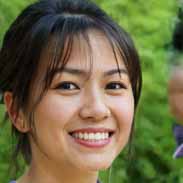Genetics – Microbiology Test Questions – Flashcards
Unlock all answers in this set
Unlock answersquestion
| Heredity |
answer
| the transmission of genetic information from an organism to its progeny (offspring). |
question
| Chromosomes |
answer
| a circular (prokaryotes) or linear (eukaryotes) molecule of DNA and proteins that contains genes |
question
DNA structure |
answer
–arranged in a double helix –contains deoxyribose sugar and phosphate backbone –composed of nucleotides (A, T, C, G) –Antiparallel strand orientation –Strands are complementary |
question
| nucleotides |
answer
DNA- ATCG RNA-AUCG |
question
Genes |
answer
| a segment of DNA specifying a particular product (usually a protein) |
question
Alleles |
answer
| different variations of the same gene |
question
| Mutation |
answer
| permanent alteration in DNA |
question
Genetic information transfer
|
answer
the Central Dogma of molecular biology [image] |
question
| Replication |
answer
| DNA synthesis; existing DNA used as a template to make new DNA |
question
Transcription
|
answer
| RNA synthesis; existing DNA (genes) used as a template to make RNA (rRNA, mRNA, and tRNA). |
question
| Translation |
answer
| Protein synthesis; RNA molecules are used to form proteins from amino acids |
question
| What Direction does DNA replication take place? |
answer
| Always occurs in a 5’ to 3’ direction |
question
| What direction does the two replication forks move? |
answer
| Bidirectionally (progress in two directions simutaneously) |
question
| What are required enzymes for DNA replication? |
answer
Gyrase Helicase DNA polymerase Ligase |
question
Gyrase
|
answer
| unwinds the DNA double helix. |
question
Helicase |
answer
| “unzips” the two strands of DNA (breaking of hydrogen bonds that hold the strands together). |
question
| DNA polymerase |
answer
| adds nucleotides to synthesize a new DNA strand (daughter strand) from the template strand (parental strand) |
question
Ligase |
answer
| seals the “nick” where replication forks meet (adds the final phosphodiester bond). |
question
Leading strand synthesis |
answer
| replication is continuous because the replication fork is already moving in a 5’ à 3’ direction for the leading strand. |
question
Lagging strand synthesis |
answer
| replication is discontinuous (via the synthesis of Okazaki fragments) because the replication fork is moving in a 3’ à 5’ direction for the lagging strand, which does not work for DNA polymerase. |
question
RNA Synthesis- Transcription is catalyzed by this |
answer
RNA Polymerase |
question
Promoter sequences |
answer
| site on a gene where RNA polymerase binds and begins transcription |
question
3 RNA types |
answer
ribosomal RNA (rRNA) messenger RNA (mRNA) transfer RNA (tRNA) |
question
ribosomal RNA (rRNA): |
answer
| component of ribosomes |
question
messenger RNA (mRNA) |
answer
| template for protein synthesis |
question
transfer RNA (tRNA) |
answer
| brings amino acids to the ribosome for the growing polypeptide |
question
Eukaryotic
|
answer
–genes contain introns that are excised –RNA synthesis in nucleus; protein synthesis in cytoplasm |
question
Prokaryotic |
answer
–no introns in genes –RNA and protein are synthesized in the cytoplasm |
question
mRNA codons |
answer
| determine the amino acid sequence of a protein. |
question
tRNA anticodons – |
answer
| complementary to the codons of mRNA |
question
A tRNA carrying an amino acid |
answer
| is “charged”. An uncharged tRNA is not bound to an amino acid. |
question
rRNA |
answer
| component of ribosomes, which catalyze protein synthesis. |
question
Ribosomes: Small |
answer
(30S) subunit •composed of 16S rRNA and 21 proteins |
question
| Ribosomes Large |
answer
(50S) subunit •composed of 5S rRNA, 23S rRNA, and 31 proteins |
question
Enzyme Repression |
answer
| enzymes to metabolize a substrate are not made if the substrate is not present |
question
Enzyme Induction |
answer
| – enzymes to metabolize a substrate are made if the substrate is present. |
question
Point mutations |
answer
Missense
Nonsense
Silent |
question
Missense: |
answer
| base change results in a new codon that dictates a different amino acid. |
question
Nonsense |
answer
| : base change results in a stop codon that terminates translation. |
question
Silent |
answer
| : base change results in a new codon that does not change the amino acid. |
question
Frameshift |
answer
| caused by the deletion (–1) or insertion (+1) of a base. |
question
| Causes of DNA mutations |
answer
Spontaneous errors during DNA replication
Chemical mutagens –base analogs – mimic nitrogenous bases –acridine derivatives – cause frameshifts
UV Radiation –causes thymine dimers |
question
| Start Codon |
answer
| AUG |
question
| Stop Codon |
answer
UAA UAG |
question
| Name three types of rRNA |
answer
16S 23S 5S |



